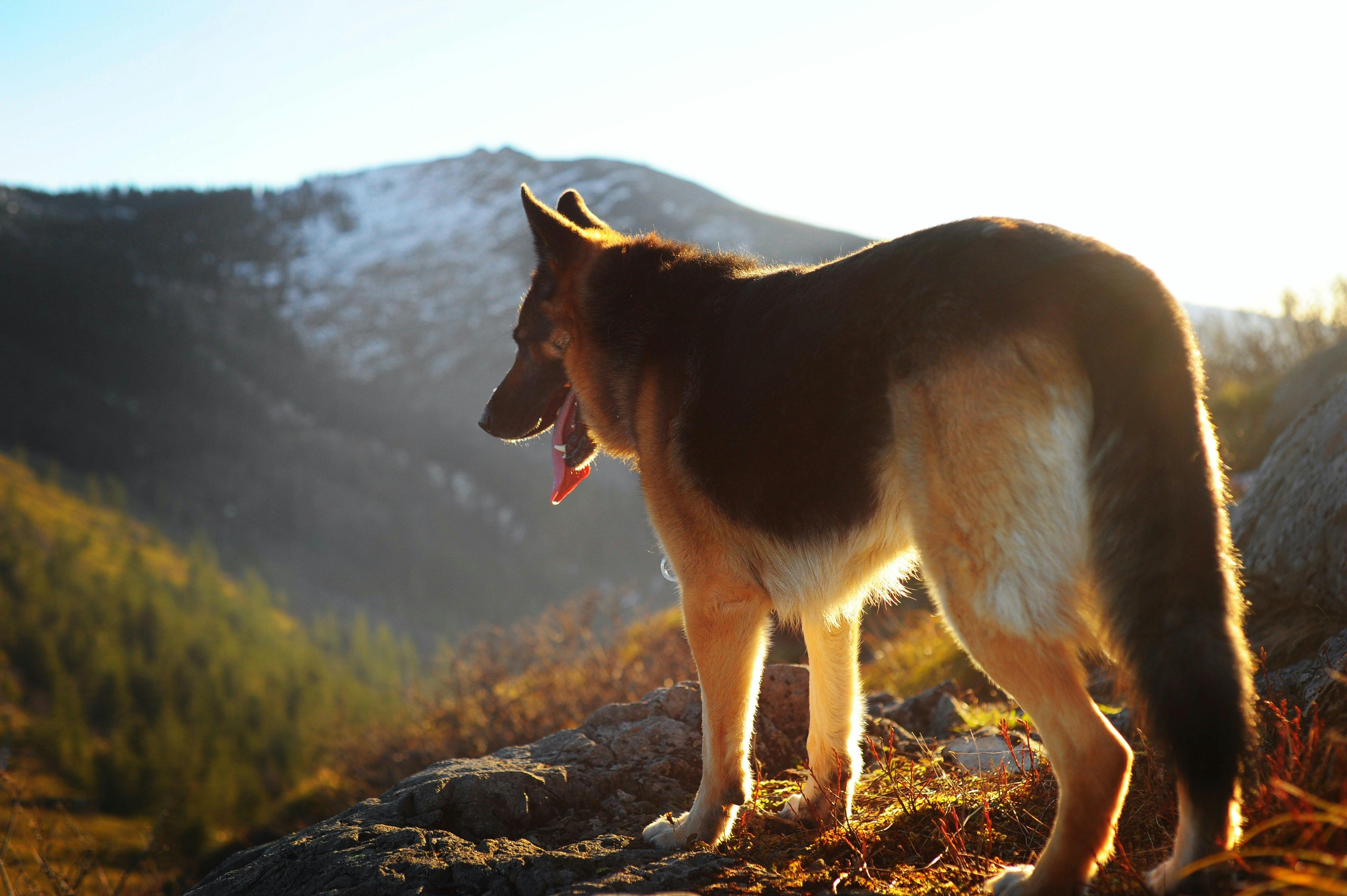
By Leslie Ingraham
Published: 07/02/2021, edited: 11/18/2021
More articles by Leslie Ingraham
Save on pet insurance for your pet
You don't have to choose between your pet and your wallet when it comes to expensive vet visits. Prepare ahead of time for unexpected vet bills by finding the pawfect pet insurance.
For some people, there’s nothing more satisfying than taking a hike with their dog. Whether it’s a challenging walk in the wilderness, or an urban hike through a city’s historic district, it’s important to know what your dog can handle.
- Age: Hiking time for puppies should be limited in both length and difficulty until about 20 months of age, as their bones need time to grow correctly. And senior dogs with arthritis or other age-related conditions may need shorter walks that exclude obstacles like downed trees and boulders, or uneven or sliding terrain.
- Health: Your dog’s own health can make a difference, as a pup suffering from heart or breathing issues will not be able to cover as much ground as an average, healthy pooch. Flat-nosed dogs like Pugs are especially prone to breathing problems on long hikes and simply can’t endure strenuous activity.
- Size: Large breeds can cover lots of ground, while a Chihuahua may be tuckered out after a spin around the block. A smaller breed’s short legs mean that they have to walk faster to keep up with you, so reducing your speed will help them walk further.
- Weather: During hot weather, it’s a good idea to cut your mileage and hiking time by half. If your pupper exhibits any signs of heat stroke like panting, drooling and weakness, try to get them to drink a few sips of water and get them to a veterinarian immediately.
- Terrain: Steep elevation changes and lots of obstacles in the path can lengthen walking times compared with a flat, easy trail. Be aware that coming down a steep mountain requires much the same energy as climbing up, and the footing is often dicey. Be watchful for trembling legs and pad lacerations.
- Start any dog with short walks at a range of 1-2 miles or less, and increase by ¼ to ½ mile per day. Practicing shorter walks before a long hike in the cold, rain, or through excessive heat will help ensure the best endurance on your adventure.
- Properly conditioned, medium-to-large sized active dogs, such as Labradors and Golden Retrievers, can hike up to 20 miles a day.
- Smaller dog breeds will benefit from a reduced speed and shorter walks to keep them safe.
- Puppies should be limited to only 1 to 2 miles–or 15 minutes a day per month of age–until their bones are strong enough around 20 months old.
- Senior dogs’ hiking times should be shortened as needed, along even, steady ground.
- Flat-nosed breeds should have shorter walk times similar to small dogs, and will likely need to stop after a few miles.
- Working breeds have more endurance than non-working pups, and actually require more exercise. Huskies and other working dogs can usually hike longer than any other pooch, while elite sled dogs can hike an average of 100 miles each day in the cold- just not in the heat due to their coats.
- Treats: Periodic treats during the hike will keep Fido happy and improve their endurance. Skip the human standards like jerky that’s filled with sugar and sodium, and opt for dog treats full of protein, fats and carbs to keep going.
- Water: Bring enough water to allow for a cup every hour or so, and a collapsible bowl or specially-made water bottle with a bowl on top. Dehydration on a hot day can markedly shorten a hike, for both you and the pupper. Don’t let your fur pal drink from streams or standing water that may be full of bacteria and parasites.
- First Aid: If minor injuries occur during a hike, it’s good to have some first aid supplies with you. Antibiotic ointment for cuts and scrapes, paw pad salve to protect their feet, insect protection and dog-friendly sunscreen can all keep your pup safe and comfortable. For more serious injuries, slings and back carriers may help carry them off the trail to find medical assistance.
- Skin that’s hot to the touch
- Drooling
- Weakness and trembling
- Bright red gums and nosebleeds
- Signs of hypothermia in cold weather, such as heavy shivering, sleepiness
- Paw pad injuries
- Signs of lameness, like limping
- Exhaustion, evidenced by sitting or lying down and refusing to budge

